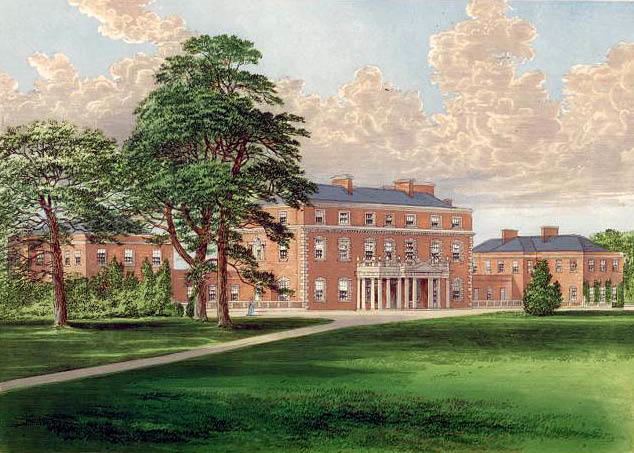Phone +44 7976 645494 | ||
 | ||
Address Downton, Salisbury SP5 3QR, UK Similar Fonthill Abbey, Longford Castle, Hackwood Park, Wilton House, Mompesson House | ||
Ar drone flying over trafalgar park wiltshire going very high and then crashing
Trafalgar Park, also known as Trafalgar House, is a 35,871 square feet (3,332.5 m2) country house south of Salisbury, in Wiltshire, England.
The estate was formerly called Standlynch Park, after an ancient settlement of that name recorded in the Domesday book of 1086. The Beauchamp family owned Standlynch Manor during the Tudor period, after which it was bought by the Greene family. They owned it until the 17th century, when it was acquired by the Buckland family.
Standlynch Manor was bought by Sir Peter Vandeput in 1726. Three years later, he had John James design what would eventually become the Trafalgar Park which can be seen today. Sir Peter died in 1748, bequeathing the estate to his son George, who in 1752 sold it to Sir William Young. Henry Dawkins bought it from Young in 1765.
In 1766 Henry Dawkins had John Wood design pavilions to the north and south of the building. He also had Nicholas Revett add a stone portico and remodel the internal architecture of the north wing. The music room was redecorated by Giovanni Battista Cipriani. Dawkins died in 1814, and the estate was presented to the heirs of Horatio Nelson.
During the Battle of Trafalgar off the coast of Spain in 1805, Horatio Nelson was shot and died on 21 October, leaving a widow but no legitimate offspring. Nelson’s closest male relative was his elder brother, the Rev William Nelson, who was given the title Earl Nelson in 1806 along with other titles of Horatio’s. William Nelson pushed for an estate to be made in honour of Nelson's final act of bravery and his great victory. Parliament decided to buy an estate that would become a permanent tribute to Nelson and his family. Standlynch Park was chosen in 1814 by Act of Parliament and was renamed as Trafalgar Park. After William Nelson’s death, his nephew Thomas Bolton changed his name to Nelson and inherited the property. When he died less than a year later, his 12-year-old son Horatio inherited the estate in 1836. Horatio Nelson went to great lengths to ensure that the estate was well maintained; he commissioned a new garden and renovation of Standlynch Church.
Trafalgar Park remained within the Nelson family until the middle of the 20th century. In 1948 the estate was sold to John Osborne, 11th Duke of Leeds, whose brother-law Oliver Lyttelton, 1st Viscount Chandos lived there while he was an MP. Eventually Lyttleton bought the estate and lived there until 1971, when Jeremy Pinckney bought the house. Pinckney lived there for six years, after which he sold the estate. A series of others bought and sold Trafalgar Park over the following years.
Michael Wade of Besso Limited bought the house in 1995, by which time it needed extensive restoration. The renovation of the estate began after enough parkland had been returned from the Longford Estate. The south stable has been converted into offices.
Films made at the estate include 28 Days Later, Sense and Sensibility and Amazing Grace. Conferences and day-away board meetings are held here throughout the year, as are charity fundraisers. Over the years the Park has been host to associations such as the National Trust, The Civic Trust and the Salisbury Hospice. Tours are sometimes arranged although the house is closed to the public.
In January 2017, it was listed for sale at £12 million.
